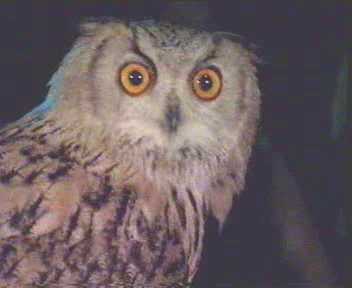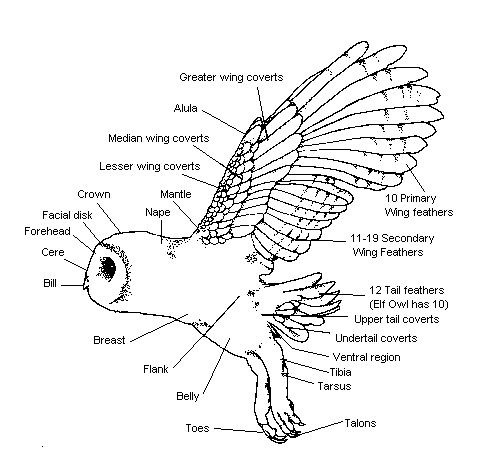|
Animal Spotlight
November 2002
The Physiology of Owls What is an owl? Owls are a group of mainly nocturnal (active at night) birds classified as belonging to the order Strigiformes, a group which is most closely related to nightjars (Caprimulgiformes).
Appearance Owls are characterised by their large, round heads and huge, forward-facing eyes. These are features that make an Owl instantly recognisable. They also have a sharp, downward-facing beaks, and soft, cryptically coloured plumage. Males and Females are generally similar in appearance, although the female is often up to 25% larger. Adaptations Owls are Raptors, or Birds of Prey, which means they hunt other living things for their food, using their special adaptations and unique abilities that set them apart from any other creature. Exceptional vision, and acute hearing play a major part in an Owl's hunting technique. Couple these with powerful talons and beak, plus the ability to fly silently, and you have a formidable predator, using stealth to hunt down prey. After eating, Owls regurgitate pellets, which contain the indigestible bones, fur and feathers of their victims. These pellets can be collected by researchers to study Owls' eating habits. Distribution Owls are found on all continents except Antarctica, and in a great variety of habitats, from thick forests to open prairies. Size They range in size from the tiny "Least Pygmy Owl" (Glaucidium minutissimum) at 12cm (4½") tall, to the rather large "Great Gray Owl" (Strix nebulosa) at up to 84cm (33") tall.
Acknowledgements - Facts on the Eagle Owl from Wildlife Fact File, Photo from Night Safari, while any additional general info on owls is taken from the above source website about owls. Back to
Home | Explore | Rangers’ Station | Walking Trails | Tram Ride | Resources
|
|||||||||



